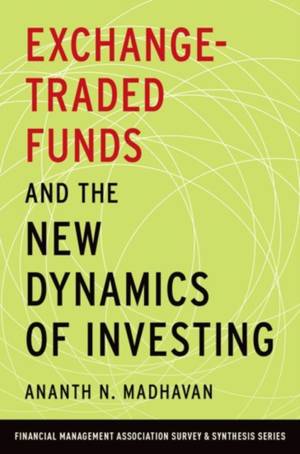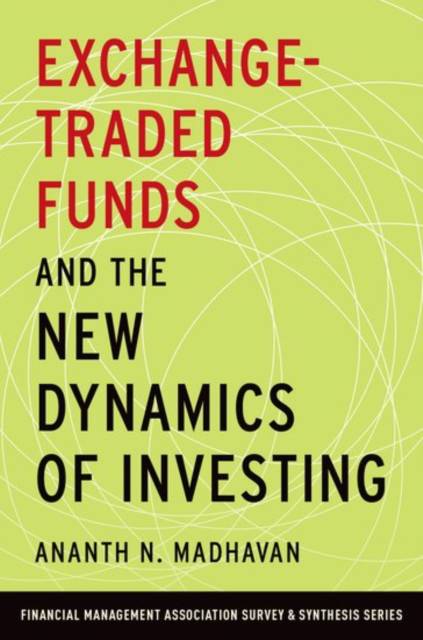
- Afhalen na 1 uur in een winkel met voorraad
- Gratis thuislevering in België vanaf € 30
- Ruim aanbod met 7 miljoen producten
- Afhalen na 1 uur in een winkel met voorraad
- Gratis thuislevering in België vanaf € 30
- Ruim aanbod met 7 miljoen producten
Zoeken
Omschrijving
In Exchange-Traded Funds and the New Dynamics of Investing, Ananth Madhavan examines the quiet transformation of asset management through the rise of passive or index investing. A closely-related phenomenon is the rise of exchange-traded funds (ETFs). An ETF is an investment vehicle that trades intraday and seeks to replicate the performance of a specific index. ETFs have grown substantially in size, diversity, and market significance in recent years. These trends have generated considerable interest, especially from retail and institutional investors and increasingly from academics, regulators and the press. ETFs have the power to be a disruptive innovation to today's asset management industry because many traditional active managers and hedge funds deliver a significant fraction of their active returns via static exposures to factors like value. Indeed, for the first time ever, assets in global ETFs exceeded $3 trillion in 2015, passing the amount in hedge funds.
Specificaties
Betrokkenen
- Auteur(s):
- Uitgeverij:
Inhoud
- Aantal bladzijden:
- 288
- Taal:
- Engels
- Reeks:
Eigenschappen
- Productcode (EAN):
- 9780190279394
- Verschijningsdatum:
- 27/07/2016
- Uitvoering:
- Hardcover
- Formaat:
- Genaaid
- Afmetingen:
- 155 mm x 239 mm
- Gewicht:
- 544 g

Alleen bij Standaard Boekhandel
+ 186 punten op je klantenkaart van Standaard Boekhandel
Beoordelingen
We publiceren alleen reviews die voldoen aan de voorwaarden voor reviews. Bekijk onze voorwaarden voor reviews.











